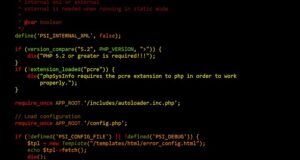Table of Contents
How much time is necessary to gain a strong understanding of ReactJS? Is it feasible to learn this technology in a relatively short amount of time? Can a complete novice become proficient in the use of ReactJS with minimal time investment? These are important questions for anyone considering learning ReactJS, a JavaScript library for building user interfaces.
ReactJS is providing a barrier for those with limited coding experience or minimal time for learning new technologies. The actual process of learning ReactJS is often daunting and can involve a steep curve of learning before users can understand its many features and nuances. Furthermore, misconceptions about the effective and fast adoption of ReactJS by novice coders are making the problem even worse. There are many articles and blogs that claim that ReactJS can be quickly learned even by those completely new to programming, but these claims are not always backed up by evidence.
In this article, you will learn the basics of ReactJS, understand the challenges faced in quickly learning this technology, and explore the various resources available for effectively acquiring knowledge of ReactJS. Further, you will learn the best practices for mastering the technology in a reasonable amount of time, and gain insights into how ReactJS frameworks and applications can be created once the fundamentals of ReactJS are mastered. Finally, this article will also provide advice on when and how to move beyond the basics and gain a strong understanding of ReactJS.
Definitions of ReactJS
ReactJS is a JavaScript library for creating user interfaces that are fast, scalable, and simple. It is used particularly for building single-page web applications and mobile applications. ReactJS is focused on the “view” layer of an application and encourages developers to use a declarative style of programming, which makes it easy to develop user interfaces with a flexible and modular codebase.
JavaScript is a scripting language used to create websites, to manage data, and to manipulate documents within a web browser. It is usually used alongside HTML and CSS for building websites and web applications.
Single page applications are web applications that operate in a single HTML document. Instead of sending requests to the server to get a new page, all of the content and interactions are handled within the one page. This reduces the amount of data transfer between the server and the client, resulting in faster page loads.
Declarative programming is a type of programming style which focuses on expressing the desired output, rather than expressing the steps needed to get to that output. ReactJS uses this programming style to create code that is easy to read and understand.
Learning the basics of ReactJS does not take a great deal of time. Once you have a basic understanding of JavaScript, HTML, and CSS, you can begin to learn ReactJS. A basic understanding of object-oriented programming can also come in handy. With some practice and dedication, most people can learn the basics of ReactJS within a few weeks or months.
What is ReactJS?
Introduction
ReactJS is a popular JavaScript library used for building user interfaces. Developed by Facebook and maintained by a community of developers, it is used for creating dynamic web applications that are fast and efficient. It is a component-driven library, allowing developers to create simple reusable components that can be easily integrated into larger applications. The library has gained popularity due to its easy learning curve, ability to be used for both web and mobile development and benefits such as virtual DOM.
Benefits of ReactJS
Virtual DOM:
ReactJS utilizes a virtual DOM, a programming concept which makes it easier for developers to reason about user interfaces. Usually web applications’ Document Object Model stores the state, allowing the web app to constantly update itself. The virtual DOM works as a client-side in-memory copy of the actual DOM, making it faster for the developers to make updates to the UI without having to re-render the entire page each time.
Component-driven development:
ReactJS is component based, allowing developers to create reusable components to build applications quickly and efficiently. Components are small independent elements that encapsulate its own data and behavior, allowing the components to be used across multiple apps without needing to be re-written. This makes it easier for developers to quickly and effortlessly create applications without having to write code from scratch.
Efficiency:
ReactJS is highly efficient, allowing developers to focus on the essential parts of an application without needing to worry about the more complex tasks. This makes it faster for developer teams to deliver quicker results, even for large and complicated projects.
Easy Learning Curve:
ReactJS is very easy to learn due to its easy syntax and component-driven development structure. This makes it suitable to be used by developers of all levels, from beginners to advanced-level software engineers.
Conclusion
ReactJS is a highly popular JavaScript library used for developing user interfaces. ReactJS is popular amongst developers due to its easy learning curve, ability to be used for both web and mobile development and many other benefits such as virtual DOM and component-driven development. With its efficient and versatile structure, ReactJS is the perfect library for developers to create intuitive and easy-to-use user interfaces.
Components of ReactJS
ReactJS is a popular JavaScript library for building user interfaces. It has become a popular choice for developers due to its powerful features and fast development speed. React provides an organized structure of components and state to easily create large web applications. As a result, working with React can be much simpler and faster than other libraries.
React Components
React components are the building blocks of a React application. They are the basic unit of structure and composition in React. Components are designed to represent a particular section of a web page, and are usually self-contained with all their logic and data. Components can also be used to create complex user interfaces, with components interacting with each other and changing depending on different states or events within the application. Components can be reused throughout the application, making React development easier and faster for developers.
State and Props
React apps use two types of user-defined data: state and props. These data provide the application with necessary data, and are passed down from parent components to their children. State values are managed and updated internally by the component itself, while props values are passed down from parent components and should not be changed by the component. By using these two data types, developers can easily modify data throughout their application without modifying individual components.
React apps also use declarative coding, meaning that developers do not need to manually track and update data within their application. Instead, they can define how the data should be updated, allowing React to automatically manage data for them. This makes React apps more reliable and easier to maintain.
Getting Started with ReactJS
Getting Started with ReactJS
ReactJS is a popular and modern open-source JavaScript framework for web and app development. React works with your existing code and can be employed to create rich user interfaces. It enables developers to compose UI components, handle state management, and create interactive UIs without the need to write complex code. Thanks to its declarative API, React makes programming easy and efficient.
Components in ReactJS
ReactJS is based on the concept of components. Components are the basic building blocks of React applications. They are essentially little pieces of code that make up the user interface. Components can be written once and then reused across the entire project. This makes components easier to maintain and reduces code duplication. It also allows developers to create complex user interfaces without the need to write complex code.
State Management in ReactJS
State management is an important part of React applications. It allows developers to keep track of application state, which can include user data, application data, and UI settings. React provides a set of state management methods, such as setState and useReducer, that allow developers to easily and efficiently manage application data.
Routing in ReactJS
Routing is the process of connecting different views or pages in an application. React provides a set of tools for routing and navigation, such as React Router and ReachRouter. These tools make it easy to create and configure routes, navigate between different views, and persist application state.
In conclusion, ReactJS is a popular and modern open-source JavaScript framework that makes programming efficient and easy. It makes use of components, state management, and routing to create rich user interfaces. With React, developers can create complex user interfaces with ease.
Conclusion
.
Conclusion:
Have you ever wondered how long it takes to learn the basics of ReactJS? We can confidently say that the amount of time required to learn the ReactJS basics varies from person to person. However, it’s safe to say that it takes a while before one can become a proficient ReactJS coder. For those who are serious about learning ReactJS, it’s best to set aside some time each day to learn it.
At our blog, we strive to provide insights on both novice and advanced ReactJS coding. Be sure to check back regularly for new releases or subscribe so you can get instant updates!
Finally, here are some commonly asked questions about the basics of ReactJS:
Q1: How easy is it to learn ReactJS? It is not easy to learn ReactJS, especially if you are completely new to web development and programming. Like most coding, ReactJS requires some problem solving skills and a good understanding of HTML, JavaScript, and CSS. But with practice and dedication, anyone can learn the basics of ReactJS.
Q2: Is ReactJS hard to debug? Debugging ReactJS applications can be more difficult than other web platforms due to its reliance on multiple libraries and additional syntax. Common debugging methods like breakpoints and console logs can help developers find the source of a bug. It also helps to use error monitoring tools that alert developers to high-priority issues.
Q3: Can React replace JavaScript? React is a JavaScript library, so it is not a replacement for JavaScript itself. However, it does provide advantages over plain JavaScript, like being able to use a declarative syntax and virtual DOM. React can also be used with additional JavaScript libraries to create complex user interfaces.
Q4: What are the benefits of learning ReactJS? ReactJS is one of the most popular web development frameworks thanks to its modular design and fast performance. Developers who invest the time to master ReactJS can benefit from its integration with other technologies like Node.js and Express.js. ReactJS can also be used to create mobile apps with React Native.
Q5: Does ReactJS have a broad job market? ReactJS has one of the widest job markets in web development as many companies use it for their websites and apps. Experienced ReactJS developers can find jobs in companies across the globe with salaries ranging from entry-level to senior roles. It’s also becoming popular for freelancers to take up projects in ReactJS development.

